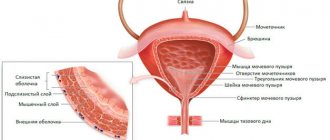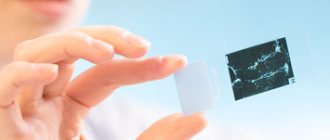An important diagnostic method for understanding the condition of the kidneys is a urine test. But with general research it is not always possible to obtain accurate data on some elements and their ratio in the biomaterial. A more detailed study helps identify kidney diseases. Such a technique exists, and it is named after the author who invented it. Urine analysis according to Addis-Kakovsky can provide objective information only if the collection and preparation for it is carried out correctly. It allows you to accurately determine the number of red blood cells and leukocytes released per day.
Features of preparing a patient for this test
In order to ensure the accuracy of the result, the patient is recommended to follow a special diet the day before collecting the material. It consists of eating meat products and limiting fluid intake. These conditions must be observed in order to avoid underestimated results that may appear due to the decomposition of formed elements.
This can occur in neutral and alkaline urine. This breakdown is also possible if urine has a low specific gravity. If you follow nutritional recommendations, the specific gravity and pH of urine returns to the desired level.
Algorithm for collecting and donating urine
There are no particular difficulties when collecting urine; you need to adhere to the standard rules for taking samples:
- the day before (1 day before the analysis) reduce the volume of liquid. The exact numbers will be indicated by the doctor, taking into account pathologies, the norm of the drinking regime characteristic of a particular person;
- containers for urine must be dry and clean. The best option is sterile containers with a lid, which are offered by pharmacy chains;
- The timing of sample collection depends on the doctor's recommendations. When the material is taken in the evening, a gap of 10-12 hours between two collections is quite enough. Take evening (before bedtime) and morning portions. When you need to start collecting in the morning, you need to collect the daily volume. The first morning portion does not count; you need to record the time when you urinated. So the next morning the first urination is collected, completing the collection;
- It is recommended to avoid visiting the bathroom at night so that in the morning after waking up you can collect all the accumulated urine;
- It is important to wash the genital area well before each sample collection. Avoid cosmetics; clean, warm water is sufficient;
- the collected material is stored on the bottom shelf of the refrigerator unless the doctor says otherwise;
- when the collection is completed, the daily volume must be quickly delivered to laboratory technicians, since after 2 hours the objectivity of the indicators is significantly reduced. Therefore, you need to try to follow all the recommendations received from the doctor.
As for small children, the procedure is simplified for them - urine is collected within 10-12 hours, taking into account the recommendations listed above. It is necessary to have a sterile container, maintain hygiene, storage conditions, and delivery to laboratory technicians.
It is more convenient for children to donate urine on a stationary basis.
Features of collecting material for research
The peculiarity is that the material must be collected within 24 hours. You should also ensure that the liquid is stored correctly. Otherwise, the Kakovsky-Addis test will show an incorrect result. You should know that there are two ways to collect urine for this test.
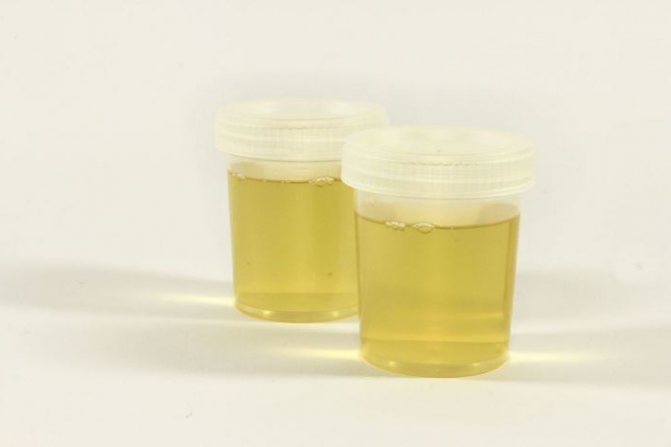
The first is that the patient needs to empty the bladder in the morning. Next, collect the material in a special container with the addition of formaldehyde or thymol crystals. If you add the first named substance, then its amount should be 4 or 5 drops. The use of thymol crystals suggests that it needs to be added in an amount of 2 or 3 pieces. Urine should be stored in the refrigerator.
You can also collect within ten or twelve hours. But you should know that the first option will give a more accurate research result. To collect material using the second method, you need to empty your bladder in the evening. Next, in the morning, namely 10 or 12 hours after evening urination, the patient collects urine in a special container. It is possible that a person will not be able to retain urine in the body for 10 hours. In this case, it should be collected in parts. The material is also stored in the refrigerator. Women are advised to use a catheter to collect urine.
The collected material should be sent to the laboratory for research. This is how the Kakovsky-Addis test is taken.
Indications for research
A Kakovsky-Addis test is taken if the following renal diseases are suspected:
- pyelonephritis (inflammatory kidney disease);
- glomerulonephritis (bilateral kidney damage with damage to the renal glomeruli);
- renal cystosis (benign neoplasm with liquid contents);
- urolithiasis (a metabolic disease characterized by the formation of stones in the urinary system);
- chronic renal failure (irreversible impairment of kidney function).
Urinalysis according to Addis-Kakovsky has become quite widespread in medicine and has 2 ways of doing it:
- Addis method, which involves collecting biological material within 24 hours. In this case, in the morning the patient empties the bladder and over the next 24 hours collects urine in a special container, which should be stored in a dark, cool place with the obligatory addition of a preservative to it (to preserve all the formed elements).
- The Kakovsky method, which is more popular in medical practice and has a significantly simplified method of collecting urine - it is collected 10-12 hours in advance by emptying the bladder at night and the next emptying only after 11-12 hours, also in a special sterile vessel.
To determine the form indicators, the urine is thoroughly mixed before starting the study. A small amount is then placed in a specially designed tube and passed through a centrifuge for 5 minutes at a speed of about 2000 rpm. After this, excess urine is removed, leaving only 0.5 ml of sediment, on the basis of which the result of the study is determined.
How to properly prepare and collect urine for analysis?
The study requires simple preparation. It consists of the patient following a high-protein diet. The predominance of meat products acidifies the urine, which helps to identify the type and number of cylinders present.
These elements are extremely difficult to detect in liquids with an alkaline or neutral reaction. In addition to consuming more meat than usual in advance, 24 hours before the start of urine collection, it is necessary to reduce the amount of liquid you drink.
The Addis-Kakovsky urine collection algorithm is simple:
- Prepare a sterile container in advance - a 3-liter jar and a smaller container for transporting part of the material to the laboratory.
- After waking up in the morning, urinate in the toilet. Time to write it down.
- Starting from the next visit to the toilet, biological fluid must be collected in a bottle.
- Collection is carried out within 24 hours from the moment of the first urination the day before.
- To obtain the most objective results, doctors recommend not going to the toilet at night.
It is difficult to collect urine from children all day long. Therefore, the Addis-Kakovsky test is performed using the express method. The secreted liquid collects for 12 hours - from evening to morning. The time of receiving the first and last portion of urine must be recorded.
How can pregnant women collect urine for analysis according to Nechiporenko?
Sometimes, instead of the Addis-Kakovsky test, children are prescribed the Amburge test.
Before collecting the next portion of urine, it is necessary to thoroughly wash the external genitalia. Women are advised to cover the vaginal opening with a cotton swab.
Material intended for research must be stored inside the refrigerator. Once collection is complete, the liquid is stirred. Then 1/50 of the total volume is poured into a sterile container. It must be delivered for examination within 2 hours.
Protein diet
Features of the study
A distinctive feature of urine testing using this method is the daily collection of urine with minimal fluid intake.

The analysis owes its name to the Soviet scientist A.F. Kakovsky. It was he who recommended studying the number of blood cells in urine collected over eight hours. His American colleague improved this method by clarifying the selected biological material.
He proposed using daily urine intake for research, while minimizing the amount of fluid consumed. He argued that only such conditions would help to reliably identify the number of blood particles in urine, determine the condition of the paired organ and the presence of suspected diseases in it.
Today, doctors use both options, but the reliability of the study depends on when the collection of biological fluid begins.
Purpose of the study
This method of analysis is used not only to determine the number of red blood cells and leukocytes, but also to identify the predominance of one element over another, which is considered important in determining the type of disease. It should be added that the analysis makes it possible to observe the development of the pathology itself.
Analysis using this method is considered effective in cases of renal dysfunction accompanied by hypertension. It is often turned to in situations where kidney pathology is pronounced, but other methods of examining urine do not show any deviations from normal values.
Sometimes a specialist is interested in the number of cylinders in such an analysis. This helps determine whether there are infectious diseases in the canals of the genitourinary system.
In addition, this method of examination makes it possible to determine the presence of protein in urine and determine other indicators that, in addition to the main disease, help to identify or refute other organ diseases.
Algorithm for collecting urine analysis according to Addis-Kakovsky
The time required to collect urine using this method can vary from ten hours to one day. The final time depends on the factor when the collection of biomaterial began. If you started collecting in the evening, then the process should last at least ten to twelve hours. When selecting the first batch early in the morning, the full daily amount should be collected. In each case, the exact time of the beginning and end of the collection process is recorded.
All urine secreted by the body during this time should be completely collected in a single sterile container. Before you start urinating, you must perform hygiene procedures on the genitals.
Storage of biological fluid is carried out in a refrigeration chamber. Having collected the last batch, all material intended for research must be promptly transferred to the laboratory. The fact is that after two hours the analysis indicators will be considered invalid.

Urine sample according to Addis-Kakovsky: stages of the study
After the urine is delivered to the laboratory, it is mixed. Next, its quantity is measured. Afterwards, the necessary part for research is taken. The volume of urine that will be examined by the laboratory assistant is calculated using a special formula. Namely, it is necessary to take the amount of urine that was excreted by the body in 12 minutes. To do this, the total volume of collected material is divided by the number that is obtained by multiplying the time for how much urine was collected by 5. Where 5 is the number of the volume of urine that was excreted by the body in 12 minutes.
Next, the resulting volume of material is placed in a centrifuge-type tube. It carries out the centrifugation process. Depending on the speed of revolutions, it takes different times. For example, if the speed is 3,500 rpm, it will take 3 minutes. Assuming 2,000 rpm, the process will take 5 minutes.
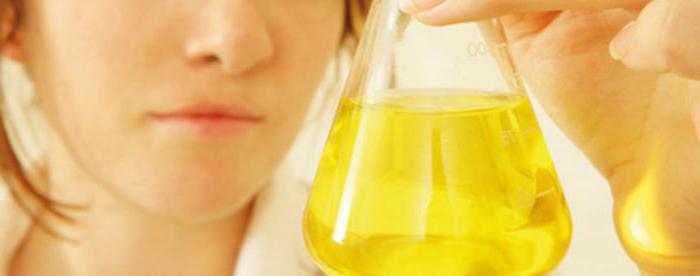
Next, the top layer is suctioned. 0.5 ml of urine with sediment is left. In cases where the latter exceeds this volume, one milliliter of liquid should be left. The next stage of the study is to mix the material and place it in a counting chamber. The latter calculates the presence of elements such as leukocytes, red blood cells and casts in the urine.
Then, depending on the volume of the material being studied, the data obtained are multiplied by a value that will make it possible to determine the daily amount of elements in the urine.
Specific urine tests
A standard general urine test is not inherently an exhaustive method of laboratory diagnosis. The absence of deviations in the indicators of this analysis does not at all exclude pathology. Therefore, if various diseases of the kidneys, urinary tract and other organs are suspected, specific tests are performed.
Addis-Kakovsky test
In other sources – Kakovsky-Addis. Allows you to determine the daily amount of formed elements (erythrocytes, leukocytes), as well as cylinders excreted in urine. The casts are casts of protein in the renal tubules.

The method of taking urine for analysis is as follows. The night before, before going to bed, the patient urinates in the toilet. Then, for the next 10-12 hours, the patient does not urinate if possible and takes a limited amount of fluid. If it is impossible to refrain from urinating, during the entire time urine is collected in several stages with a time stamp of the last urination. Next, the urine is mixed, and the content of the above elements in 1 ml is determined. Then, using a special formula, the daily release of red blood cells, leukocytes and casts is calculated. Deviation of these indicators from the norm is a sign of urinary tract infection, as well as kidney damage such as glomerulonephritis and pyelonephritis.
Nechiporenko test
Urine is taken in the morning after the necessary hygienic procedures. Moreover, the study requires exactly the average portion of morning urine. To do this, at the very beginning of urination, the patient urinates into the toilet, the average portion of urine in an amount of at least 15-20 ml is placed in a sterile disposable container, and the final portion is placed back into the toilet. The container with the found material must be delivered to the laboratory no later than 1-2 hours later. In 1 ml. of the obtained urine, the number of red blood cells, leukocytes and casts is counted.
Zimnitsky test
Allows you to evaluate daily fluctuations in the volume and relative density of urine excreted.
For this, the patient is given 8 sterile disposable containers. Urine is collected in each container for 3 hours. 8x3 =24, i.e. day. If there is no urination within the required 3 hours, the container remains empty, and the next one is taken for subsequent urinations. All containers are sent to the laboratory labeled as they are filled. Based on the results obtained, one can judge the excretory and concentration function of the kidneys. The norms of the results of these studies vary in different laboratories, and therefore are deliberately not presented in this article. As a rule, the laboratory provides an answer on letterhead indicating the limits of permissible values.
Who is the study for?
This research method is considered an addition to other tests and is used for renal pathology. It can show a deviation most informatively if the functions of the renal glomeruli are impaired due to hypertension, as well as in connection with some other diseases.
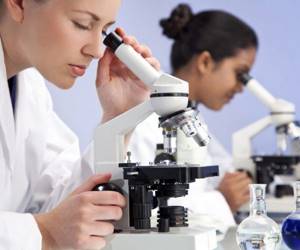
The doctor prescribes an analysis for the following conditions:
- single cysts or polycystic;
- glomerulonephritis (autoimmune damage to the glomeruli);
- pyelonephritis (inflammatory changes as a result of infection with damage to the tubules);
- formation of stones and sand;
- renal failure (to assess the effectiveness of drug therapy).
Feature of the study: you need to collect daily urine, take a sample from it, in which blood cells (erythrocytes and leukocytes), as well as their ratio, will be counted. Comparing one Addis-Kakovsky analysis with another over time helps to assess the progression of the pathological condition.
Indications for analysis
Laboratory testing of urine using the Addis-Kakovsky method is prescribed to identify kidney pathologies. For a doctor, the reason to prescribe a test for a patient is the need to clarify the presence of a disease or control the patient’s condition when:
- single or multiple cystic formations;
- glomerulonephritis;
- pyelonephritis;
- urolithiasis;
- renal infarction;
- blockage of the veins of the filtering organ by a blood clot;
- amyloidosis;
- chronic kidney dysfunction.
Analysis may be needed after a viral infection, severe intoxication with alcohol and salts of zinc, mercury, lead, cadmium and other heavy metals. The Addis-Kakovsky study is one of the diagnostic methods for the malignant form of hypertension.
Addis Kakovsky test: norm of indicators when passing, advantages of the method
The norm is the presence in the urine of erythrocytes up to 1,000,000, leukocytes up to 2,000,000, cylinders up to 20,000.
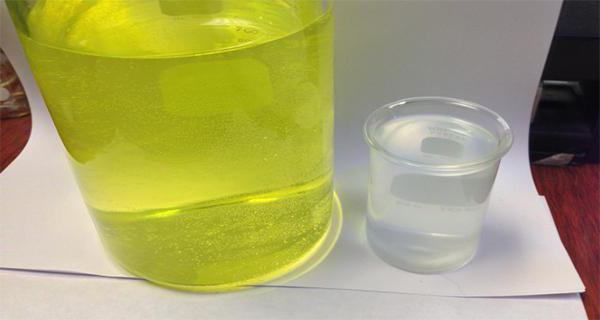
What advantage does the Kakovsky-Addis test have over other methods?
The main advantage of this study is that it allows us to take into account the daily fluctuations of the body when excreting formed elements through urine.
Normal indicators
If the paired organ does not have inflammatory diseases, pathological abnormalities or other pathogens that can disrupt its performance, then the results of the study using the Addis-Kakovsky method will be as follows:
- leukocyte level – up to 2,000,000;
- red blood cell count - about 1,000,000;
- number of cylinders – up to 20,000.
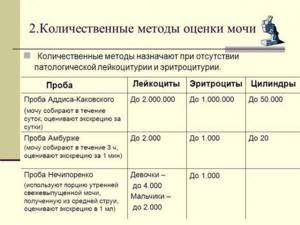
Recommendations for patients
The Addis-Kakovsky test differs from a general urine test in the method of collecting and storing biomaterial. Daily diuresis is examined, starting at 8 pm or in the morning, after missing the first urination. You need to urinate in a sterile dry container for 24 hours, then take it to the laboratory, collecting everything in a three-liter bottle.
Proper preparation
A few days before the test, to increase the acidity of the urine, increase your protein intake (meat, dairy products, eggs). This will allow you to count the number of cylinders that quickly dissolve in an alkaline medium. To maintain the reliability of the results, during urine collection, avoid alcohol, carbonated drinks, and stop taking medications.
Collecting urine according to Addis-Kakovsky is necessary, adhering to the following recommendations:
- reduce fluid intake;
- try not to urinate at night, but collect everything in the morning;
- Before urinating, wash yourself thoroughly without using hygiene products;
If children are being examined, it is recommended to limit urine collection to 10-12 hours. To do this, the analysis begins with the second urination in the morning and ends with the last one before bedtime. For everything to go right, it is better to be in a hospital under the supervision of medical workers.
Urine collection, storage and delivery
Urine collection lasts 24 hours, and after extreme urination, it is necessary to deliver the contents to the laboratory within 1-2 hours. Otherwise, the composition of urine will change, and the results will be unreliable. Therefore, it is recommended to start the analysis at 20:00 and finish at 8:00-10:00. Be sure to indicate on the form the period for which the analysis was carried out. It is also recommended to calculate and record the amount of water you drink per day.
What disadvantages does this method have?
- There is a category of patients who are unable to retain urine for 10 or 12 hours in the body. For example, people diagnosed with nocturia.
- There are also patients whose body condition does not allow them to completely empty their bladder. This phenomenon is observed in those who suffer from adenoma or prostate cancer.
- Donating urine through a catheter is possible only in a hospital.
- The Addis-Kakovsky test in children is not feasible, since children will not be able to restrain themselves for a long time.

There are reasons why urine levels may be higher than normal. Namely, purulent processes in the body of a chronic nature, heparin therapy and poisoning with any poisons.
When collecting material for a study such as urine analysis according to Addis-Kakovsky, a lot of time is spent storing it. Therefore, partial lysis of formed elements may occur, which will lead to inaccurate results.
Flaws
These include the following:
- The analysis will require a certain amount of time to complete.
- During the preservation of daily material in urine, minor destruction of elements occurs.
- The readings may be influenced by medications taken and inflammatory processes occurring in the body.
- When analyzing the indicators, it is not possible to accurately assure which kidney or ureter is damaged.
Another disadvantage is that this type of analysis is difficult to conduct for young children.
Negative points prove that the method is not perfect enough, and it can be used as an additional examination. By the way, for pyelonephritis, this method is considered informative; an accurate diagnosis is not made using it.
Disadvantages of the analysis
The advantage of this urine test is the ability to count the number of leukocytes and red blood cells, taking into account fluctuations in indicators per day. This is perhaps the only plus of the test. There are more disadvantages, so this technique is often used as one of the options to clarify the diagnosis, but there is no way to identify a specific ailment. The disadvantages are the following:
- urine is stored for a long time. Within 24 hours, the elements are partially lysed, especially red blood cells. The process is associated with alkaline fermentation. Therefore, the results indicating the number of red cells are distorted;
- such a test is difficult to use when it comes to children - the question arises about the difficulties of collection, hygiene, and sterility of the sample;
- urine parameters change not only from kidney pathologies, but also under the influence of inflammation with pus, poisons, and other harmful factors;
- the method itself cannot be classified as a rapid diagnosis, therefore, when urgent results are needed, such a test is not suitable;
- Sometimes the above scheme for collecting biological fluid is not suitable for patients. For example, some patients cannot empty the bladder for 10-12 hours, others cannot completely remove the entire volume of fluid. The catheter is used only permanently;
- Using this method, it is not possible to understand which of the two kidneys is affected, since the test produces average results. When it comes to unilateral kidney disease, the test is not informative.
Such results will help the doctor assess the condition of the kidneys and clarify the diagnosis.
Normal indicators and reasons for deviations
In a healthy person, elements are determined in the urine in the following quantities:
- about 1,000,000 erythrocytes (red blood cells);
- up to 2,000,000 leukocytes (white cells);
- cylinders - up to approximately 20,000.
In urine, red blood cells can be found unchanged - they contain hemoglobin. Sometimes altered forms of red blood cells are observed. A small number of leukocytes are detected in anyone, even a healthy person. Hyaline casts are found in people without pathology after physical activity. Protein and granular casts in urine indicate malfunction of the kidneys.
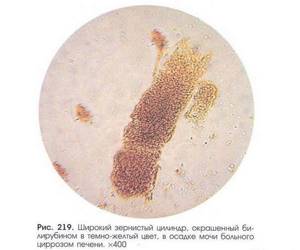
The causes of deviations include the following diseases:
- pyelonephritis (predominance of leukocytes over red blood cells);
- the same change will occur with infection of the underlying urinary tract;
- the appearance of a large number of red blood cells indicates glomerulonephritis;
- blood in the urine is also detected with hidden internal bleeding;
- infectious inflammation of the kidneys together with urolithiasis is manifested by the same amount of white and red blood elements;
- the same change may be a sign of a tumor of the genitourinary system or tuberculous lesions of the renal parenchyma;
- an increase in cylinders indicates the progression of inflammation.
For hypertension, the Addis-Kakovsky test will not exceed the permissible values. But if the process has gone far, and renal sclerosis develops, then the concentration of red blood cells increases, and the content of white cells remains within normal limits.
Reasons for deviations from the norm
An increase in leukocytes will indicate that pyelonephritis is developing in the kidneys, and the ureteral canals are infected. In the chronic stage of the disease, the level of this element will reach 200 million.
With a predominance of erythrocytes, we can confidently say that glomerulonephritis is progressing in the paired organ. This disease can disrupt the vascular system and capillaries. Because of this, blood will begin to flow into the bladder in large quantities. The urine will turn burgundy-brown in color.
In addition, the high content of red blood cells in the biological fluid suggests that there is hidden bleeding in the body.
If both indicators are at the same level, but their value is high, calculous pyelonephritis, new malignant formations, tuberculosis of the genitourinary system, and other pathological abnormalities in the kidneys and ureteric canals can be diagnosed.
A large number of casts in daily urine confirms the progression of inflammatory diseases in the kidney tissues. In hypertensive patients, the results of analysis using this method will be normal if sclerosis of the paired organ does not occur. And when such a process is already in the active stage, the leukocytes will be normal, and the red blood cells will exceed normal levels.
How is research carried out in the laboratory?
In order to conduct a urine test using the Kakovsky-Addis method, you should prepare special equipment, namely:
- a special centrifuge type tube;
- pipette with a volume of 10 milliliters;
- counting chamber;
- glass stick;
- microscope for research.
Sources
- https://nefrologinfo.ru/analiz/mochi-po-addis-kakovskomu.html
- https://www.clinlab.info/Urinalysis/Kakovskogo-Addisa-method-45
- https://IllnessNews.ru/proba-addisa-kakovskogo/
- https://fb.ru/article/301084/chto-takoe-proba-kakovskogo-addisa
- https://TvoyaPochka.ru/analizy/proba-addisa-kakovskogo
- https://pro-analiz.ru/mocha/addis-kakovskij-analiz.html
- https://UroMir.ru/diagnostika/issledovanija/analiz-mochi-po-addis-kakovskomu.html
- https://urologia.expert/mochevoj-puzyr-i-uretra/analiz-mochi-po-addis-kakovskomu
[collapse]
Preparation
Careful preparation should be undertaken before performing this analysis. In this case, it is recommended to somewhat limit oneself in fluid intake, and the attending doctor, a day or two before the test, may advise the patient to eat more protein foods with a predominance of meat in the diet. Before each visit to the toilet, you should wash yourself thoroughly. It is not recommended to go to the toilet at night during the analysis. It is better to collect the night portions in the morning once. However, this is all individual and depends on the age, as well as the physiological characteristics of the patient.
For children, the time for collecting analysis according to Kakovsky is reduced to 10 hours, since, due to their age and physiology, they are not yet able to hold urine while sleeping at night. It is very important to collect fluid from the bladder not at home, but in a hospital, where junior medical staff can monitor the process. The nurse needs to record the total volume of the collected fluid, mix it thoroughly, pour out 20-30 ml and immediately send it to the laboratory.








